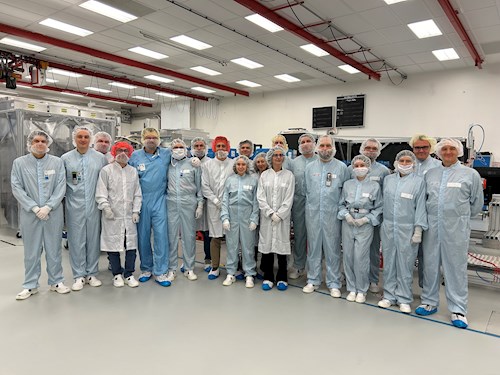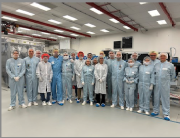日本語で読みたい方は、 google chromeで開き、
画面上で右クリックをして、「日本語に翻訳」をクリックしてください
A team of international scientists from Lawrence Livermore National Laboratory (LLNL), Fraunhofer Institute for Laser Technology ILT, and the Extreme Light Infrastructure (ELI) collaborated on an experiment to optimise high-intensity high-repetition rate laser technology using machine learning. The experiment represents a significant leap forward in the study, understanding, and practical application of high-intensity lasers.
“Our goal was to demonstrate robust diagnosis of laser-accelerated ions and electrons from solid targets at a high intensity and repetition rate,” explains Matthew Hill of LLNL, the lead researcher. “Supported by rapid feedback from a machine-learning optimisation algorithm to the laser front end, it was possible to maximise the total ion yield of the system.”
This collaborative effort and the utilisation of state-of-the-art laser technology coupled with machine learning techniques have opened new avenues for advancements in various fields such as medical therapy, materials science, and non-destructive analysis in the field of cultural heritage and archaeology.
 The team participating in the collaborative experiment
The team participating in the collaborative experimentThe experiment took place at the ELI Beamlines Facility in the Czech Republic, where the researchers utilised the state-of-the-art High-Repetition-Rate Advanced Petawatt Laser System (L3-HAPLS) to generate protons in the ELIMAIA Laser-Plasma Ion accelerator. The L3-HAPLS laser is renowned for its laser performance repeatability, precision, beam quality, and the ability to generate intense laser pulses at a high repetition rate to drive the generation of secondary sources such as electrons, ions, and x-rays. The unprecedented shot-to-shot repeatability of L3-HAPLS allows scientists to focus on the understanding of laser-plasma interaction physics.
Demonstrating the integration of machine learning between target diagnostics and the dispersion controls of a high-power, high-repetition-rate laser is a significant milestone both for the facility and the wider high energy density science community.
“The successful execution of such a complex experiment showcases the cutting-edge quality and reliability of the L3-HAPLS laser system,” says Bedrich Rus, Chief Laser Scientist at ELI Beamlines. Daniele Margarone, Director of Research and Operations of ELI Beamlines concludes, “With such experiments ELI demonstrates the readiness and ability to pushing the frontiers of knowledge. We at ELI are committed to enable transformative experiments that redefine what’s possible in laser science and beyond.
出典:
https://eli-laser.eu/news/harnessing-machine-learning-for-breakthroughs-with-high-power-lasers/
ご参考:
(株)光響が提供する製品・サービス情報:
・教育分野向け各社レーザー製品
In case of addition or removal of the article, please contact us as below:
info@symphotony.com
記事の追加及び削除:
記事の追加あるいは削除を希望される場合、お手数ではございますが、
以下窓口までご連絡ください。
info@symphotony.com
この情報へのアクセスはメンバーに限定されています。ログインしてください。メンバー登録は下記リンクをクリックしてください。

